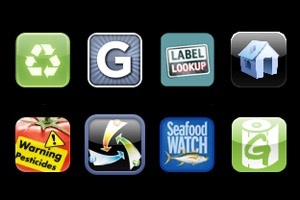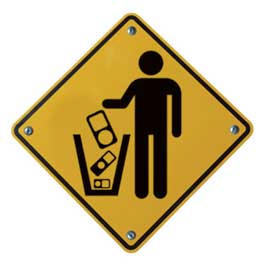
IT’S A CELL PHONE, a camera, a media player, and a handheld computer all in one. But what makes the iPhone such a great tech toy also makes it a perfect example of the often murky, sometimes downright sketchy origins of our electronics. Here’s a glimpse of what’s really in an iPhone 3GS—and any number of other gadgets, from laptops to game consoles:
We’ve loaded this iPhone up with 10 apps you won’t find on a real smart phone. Click on an app to learn where your phone’s electronic components really came from.
 |
||||||||
 |
 |
 |
 |
|||||
 |
 |
 |
||||||
 |
 |
|||||||
 |
 |
|||||||
 |
 |
|||||||
 |
||||||||
Supply Side
Apple spends an estimated $100 on the iPhone’s 1,000-plus parts. It keeps a tight lid on where in the world they come from. If you deconstruct the gadget, you’ll find fewer than 130 parts with a brand name or “made in” label on them.
Bad Apples
iPhones are made in Shenzhen, China, by the Taiwanese company Foxconn, which has been criticized for its working conditions, including long hours and harsh discipline. Apple’s own review found that more than half its audited manufacturers did not meet its labor standards for things such as child labor.
Miner Threat
A 16GB iPhone 3GS contains 12 gold-plated parts. Producing 1 ounce of gold creates 80 tons of waste. Layers of middlemen make it difficult to trace the source of the gold (or any other metal) in an iPhone, making it easy for minerals from conflict zones to slip into the supply chain.
Tantalized
The iPhone includes a tantalum capacitor. After a United Nations report linked its manufacturer, Kemet, to the illegal mineral trade in eastern Congo, the company vaguely announced it “supports avoiding” tantalum from the region.
Negative Charge
Rechargeable batteries have energized demand for lithium. Getting more will mean digging up 3,000 square miles of pristine Bolivian salt flats, home to one-half of the world’s lithium reserves.
Tin Soldiers
Tin is used to solder circuit boards. Some 27,000 tons are extracted from Congo annually, earning armed groups an estimated $93 million or more.
Screen Slaver
The 3.5-inch LCD screen is reportedly made in Taiwan and China by Wintek, which faces allegations of low wages, forced overtime, and ripping off migrant workers.
BadVibes
High-density tungsten is used to make cell phones vibrate. Three-quarters of the world’s supply comes from China—not known for its mining safety record—and 1,400 tons are dug up annually in Congo.
MicroPolluter
Making a 0.07-ounce microchip uses 66 pounds of materials, including water and toxic chemicals such as flame retardants and chlorinated solvents. Greenpeace gives Apple a 5.1 out of 10 for its efforts to eliminate hazardous chemicals and minimize e-waste.
Locked In
The list price for a 16GB iPhone 3GS is $599. It’s yours for $199 thanks to a subsidy from monopoly provider AT&T—which proceeds to fleece you with a two-year contract.














